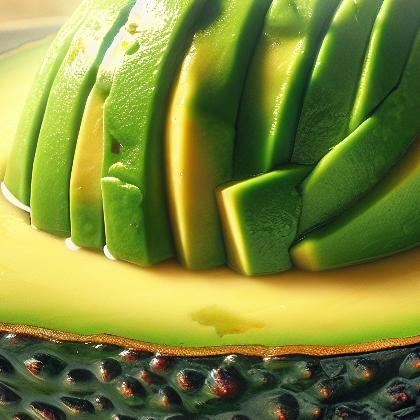Showing results for 'Avocados'
close
Avocados

The avocado (Persea americana) is a tree native to Mexico and Central America, classified in the flowering plant family Lauraceae along with cinnamon, camphor and bay laurel. Avocado or alligator pear also refers to the fruit, botanically a large berry that contains a single seed.Avocados are commercially valuable and are cultivated in tropical and Mediterranean climates throughout the world. They have a green-skinned, fleshy body that may be pear-shaped, egg-shaped, or spherical. Commercially, they ripen after harvesting. Trees are partially self-pollinating and often are propagated through grafting to maintain a predictable quality and quantity of the fruit.
Avocados Pairs With:
Food Item
Flavor Affinity Level

Did you know there are 273 food flavor pairings in my database for Avocados available. What you are seeing above is a random list of 30 items which pair with Avocados.
For the entire list, beautifully formatted, enter your email address and click the download button below, then I'll email it to you as a PDF.
Avocados Properties:
| Food Property | Type | Description |
|---|---|---|
| Texture | Creaminess | Avocados are known for their creamy texture, making them a popular ingredient in guacamole and smoothies. |
| Moisture | Avocados have a high moisture content, contributing to their creamy texture. | |
| Nutritional Value | Macronutrients | Avocados are high in healthy fats, particularly monounsaturated fats. |
| Micronutrients | Avocados are a good source of vitamins C, E, and K, as well as folate and potassium. | |
| Fiber | Avocados are rich in fiber, which aids in digestion and helps keep you feeling full. | |
| Color | Natural Pigments | Avocados have a vibrant green color due to the presence of chlorophyll. |
| Aroma | Volatile Compounds | Avocados have a mild, earthy aroma with hints of nuttiness. |
| Chemical Composition | Acidity/Alkalinity (pH) | Avocados have a slightly acidic pH level, typically ranging from 6.3 to 6.6. |
| Cooking Behavior | Heat Conductivity | Avocados have a low heat conductivity, making them ideal for raw dishes like salads and sandwiches. |
Food Pairing App - Version 1.2.0
